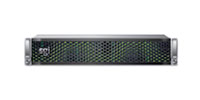 Today SGI announced plans to develop an in-memory appliance based on the SAP HANA platform. Using the scalable shared memory architecture of SGI’s next-generation UV system together with SAP HANA, the new in-memory appliance from SGI will be designed to streamline database management for single large node environments, which require extremely high capacity and scale to meet the needs of in-memory databases.
Today SGI announced plans to develop an in-memory appliance based on the SAP HANA platform. Using the scalable shared memory architecture of SGI’s next-generation UV system together with SAP HANA, the new in-memory appliance from SGI will be designed to streamline database management for single large node environments, which require extremely high capacity and scale to meet the needs of in-memory databases.
What is SAP HANA? As an architecture for building and deploying next-generation, realtime applications and analytics, SAP HANA combines database, data processing, and application platform capabilities in-memory. The platform provides libraries for predictive, planning, text processing, spatial, and business analytics.
We anticipate that the combination of the SAP HANA platform with SGI’s high performance computing products will be a significant milestone for some of the world’s largest big data environments,” said Jack Miller, chief customer officer, SAP Platform Solutions. “High-end enterprise customers will be able to massively scale main memory, helping them more rapidly unlock the full value within their data.”
According to SGI, the company’s UV in-memory computing system based on SAP HANA will be scalable to manage the growing computing needs associated with enterprise big data. The increasing number of users accessing workloads and the growing volumes of data have triggered demand for systems that can meet larger processing needs. With many customers ready to surpass traditional thresholds, the powerful SGI UV high performance computing technology will enable customers to scale with ease – providing efficient and reliable performance to help handle workloads using up to 64 terabytes of memory. The SGI system’s ability to help manage high bandwidth data processing with low latency and offload engine support will help accelerate customers’ time to value in managing and analyzing their data.
SGI expects to demonstrate the new appliance for SAP HANA in June 2014. General availability is anticipated in the third calendar quarter of 2014.
Read the Full Story.




